Our plant doctors Radko Tichavshy, Mark Moodie and Pawan Singhania weigh in on your plant problems.
Radko TIchavsky Mark Moodie Pawan Singhania
Radko Tichavsky is a Czech born Mexican Agrohomeopath. He is the former director of Instituto Comenius at Mexico, author of Handbook of Agrohomeopathy, 2007 (Spanish) and Homepathy for Plants, 2009 (Spanish) and creator and teacher of Holohomeopathy. www.icomenius.edu.mx El 04/12/2014, a las 15:36, Radko Tichavsky [email protected] escribió
Mark Moodie hosts the website Considera which provides a growing M.M and Repertory for plants and discusses resources for biodynamics and Agrohomeopathy The website allows the world community to contribute their experiences in planting.
Greetings Plant Doctors,
For the last three years I have been looking for a homeopathic solution to control insects, especially plum curculio, and also for fungal diseases on fruit trees. Initially as per Dr. Kaviraj’s recommendations I have used Thuja, Aconitum and Belladona by root feeding. At first Thuja showed some results on controlling peach leaf curl. The second year application on peach did not work. There was no success with plum curculio or pear rust. Last year I tried Mezereum and Staphysagria in the root feeding mode again, without noticeable success either with insects or fungal control. I have used dowsing pendulum to check things for energetic alignment and that did not seem to make much difference. Any help would be greatly appreciated.
Thanks,
Slavko
Radko Tichavsky:
Dear Slavko,
Application of homeopathy with anthropocentric criteria often leads to an incomplete simillimum, and in this case, very common diseases leave temporarily and then return. The goal of homeopathic therapeutic action is not primarily the elimination of the pest, but to get balance in the holon and the consequent disappearance of pathogens. The symptoms of Conotrachelus nenuphar (plum curculio) requires application of Croton tiglis 6 CH and Eriobotrya japonica 6 CH immediately after petal fall; keep the soil with covers (centipede grass is an excellent choice). You also need to systematically collect and destroy fallen fruit.
Regarding Gymnosporangium spp., in pear and apple rust we mainly use Ganoderma applanatum, Phelinus spp., Innonotus spp., Stereum spp., Trametes versicolor and Polyporus spp. in high potency (100 CH). It should be applied immediately after the rains early in the life cycle. Salix babylonica in 6 CH and Thymus vulgaris 6 CH before the appearance of fungus during fruiting, may also be useful.
Pawan Singhania :
Hi Slavko,
The primary cause of any pest and disease infestation is some kind of weakness in the constitution of plants, known or unknown. The infection is considered to be the indicator of the lack of immune system. This imbalance of constitutional factors may be lying within the soil, our cultivation practices and often due to the ‘stress’ caused by the environmental changes. I am not going into the detail but will give you a ‘broad picture’. Homeopathic remedies are to be considered only when there is a problem. But, primarily our aim should be to restore and grow ‘constitutionally balanced’ plants.
This can be easily achieved by following proper soil management and cultivation practices. To make things easy for you, I would suggest the followings:
- The physical condition of the soil should be so maintained that only ‘aerobic’ microorganisms flourish – leaps and bounds.
- All input should go via an ‘aerobically fermented compost heap’, ideally treated with Biodynamic preparations or Quick Return Herbal Activator of Lady Maye E Bruce, available from m/s Chase Organics, UK. You must learn compost making. Compost is the life line and is truly the solution to ALL PROBLEMS.
- You must learn how to store the above compost.
- You must also know when, how and how much to use the compost to sustain and improve ‘aerobic’ microbes flourishing and improving the ‘active humus content’ of the soil.
- Regulate watering to keep the soil simply moist, never wet and never dry.
- Then learn about some basic principles of Biodynamic Agriculture and use the BD preparations and follow the Biodynamic Calendar.
The above practices will improve the soil health and grow crops that become naturally ‘constitutionally healthy’. With this the immunity will improve and there will be reduction of any infections, gradually, over a period of three years.
Then of course, you can resort to any homeopathic remedies, if at all required, to trigger the immune system of the plants to control any attacks, which will be much less severe. This condition may arise often due to changes in environmental factors.
Dear Sir/ madam,
I am practicing Organic Farming in India. My farm is based in Mandvi, kutch, Gujarat with mangoes and Pomegranates of 2-4 years. I have noticed yellowing of the fresh leaves of mango. My farm manager tells me that it’s a case of nitrogen deficiency. What medicine should I use? Should the potencies be 30c, 200c or higher. Also is the standard ratio of dilution 1ml :10 litres of water valid? Regards,
Devang Visaria – Chief Strategist
Radko Tichavsky:
Dear Devang,
Homeopathy does not replace good nutrition in plants, but it can rebuild its absorption and utilization capability. Homeopathy is not used by thinking for example that the application of Nitric Acid 30 CH will bring nitrogen nutrition; in fact may even decrease the nitrogen content in this potency. In this case you could apply Calcarea carbonica 6 CH once a week for a month. Also, Trifolium spp. should be planted between crops mixed with beans as mulching to increase the presence of nitrogen-fixing bacteria (shown in the form of pellets on the roots ) and in this way fix nitrogen from the air. You can also apply a broth of leaves of Ricinus communis.
Pawan Singahnia:
Dear Devang,
If you could have also posted the picture of the yellowing leaves, it would have been easier better to give correct suggestions. However, since Kutch is in Gujrat and some of the soils are ‘Saline’, I presume the soil is also sandy. Please get the soil tested for pH, Electro-conductivity and Organic matter content.
If your Manger is right, then no Homeopathy remedy can substitute for Nitrogen, and you should look to enrich the soil with Nitrogen. If you follow the guidelines given to Slavko (above), any deficiencies could be taken care of by the compost. The quantity, method and frequency of compost to be applied needs to be modified in your area. If the soil tests indicate salinity and the EC level is high or the OM content is low, you need to adopt extra measures and improve upon your techniques and practices, which could be explained only upon knowing the status, as advised.
If you introduce Biodynamic Agriculture practices, you should use more frequent doses of CPP and BD500 (the later once every month from Nov to Feb. as also during Monsoon period). This should enrich the soil of beneficial microbes and enliven the soil. More careful application of BD 501 would develop the immune system of the trees but I would not advise it to be used during summer when it is very hot and the light is abundant. Take care of its time of application.
The potencies and dilutions of the Homeopathic remedies to be used will depend upon numerous factors. Any generalization is not the right approach.
I am from Kolkata and have experience dealing with the soils of Ahmadabad and Baroda. Maybe you can contact me: email at [email protected]
Dear Plant Doctors,
I am doing a research paper regarding cocos nucifera (the coconut palm) and its serious infestation by the pest Brontispa longgisma gaestro or coconut leaf beetle. The beetles only attack green, young, unopened leaves. As the leaf emerges, the leaflets curl, turn brown, then dry. The symptoms can be easily mistaken as drying due to water stress, especially during dry months. The leaves also appear scorched as if caused by excessive heat. In newly infested trees, the older leaves are normal in color. When the spear leaf opens, the beetles move to other plants or to the next emerging spear. Leaves that emerge undamaged will not be attacked by the beetle. The beetle hatches eggs in the leaves. Larvae brontispa longissima also infest the plant too. Biological agent, parasitoid tetrastichus brontispae is used to kill the larvae, but unfortunately not the beetle. As the leaves damage, beetles will fly out and infest nearby trees. The beetle is only capable of short flights of a few hundred metres.
Taxonomy : Brontispa longissima, Taxonomic position: Phylum: Arthropoda
Class: Hexapoda, Order: Coleoptera Family: Chrysomelidae
Biological control/parasitoid: Tetrastichus brontispae and Asecodes hispinarum. Unfortunately, only act on larvae, not at adult pest beetle.
I am thinking Chrysopida spp as a remedy because the pest came from family Chrysomelidae. Do you have any suggestions? What is the method to apply the remedy for a coconut tree (cocos nucifera)?
Thank you
Lily Sahiful Bahari
Radko Tichavsky:
Dear Lily,
Brotispa longgisima or coconut leaf beetle attacks mainly weakened trees, lately more often due to climate change and disadaptation of palms. In the treatment of this parasite Brontispa nosode 12 CH., soil nosode 6 CH, Anacardium occidentalis 6 CH (constitutional remedy palm Cocos nucifera) and Helianthus annus (radix) 6 CH are used. The strategy should not focus only on suppressing the parasite since this is only an indicator of low vitality. The repertorization of holon must include ALL symphtoms, of plant, soil and the full holon.
Pawan Singhania:
Hi Lily,
While you may try Chryspida, also try making mother tincture of Brontispa longgisma. Apply as recommended for use of homeopathy preparations on plants.
You may also learn how to make Biodynamic Ash of Brontispa longgisma and use it. You may also make the poetized version of the Ash and try that.
The above line of treatments could be an addition to your research and help coconut farmers.
Dear Plant Doctors,
We have pecan trees here in Texas that have been attacked by the Pecan Weevil. Both the adult and the larvae destroy pecans. Can you suggest a non- toxic way to solve this problem?
Many thanks
Matthew Walker
Radko Tichavsky:
Dear Matthew,
Treatment of symptoms of Peca Weewil should focus primarily on the ground where the first three phases of the insect (egg, larva, pupa) develop. Apply nosode of soil 6 CH (which must contain eggs, larvae and pupae of the insect), Quercus rubra 12 CH (Carya ilinoinesis constitutional remedies) and Anacardium occidentalis 6 CH. As auxiliary treatment you can apply walnut shell powdered and incorporated into the soil. Because the insect life cycle is 2-3 years before adulthood the final results will be expected in this period (with consistent improvements from the first year).
Greetings Plant Doctor,
In our Cherry Trees we had a Sawfly infestation last year. The larvae destroyed the leaves and thus the crop. How can we prevent that this year? Our orchard is in Washington State where the climate ranges from about 40 F in the winter to 80F in the summer. Rainfall averages about 20 inches.
Thank you
Everett Miller
Radko Tichavsky:
Dear Everett,
Symptoms of Caliroa cerasi (Sawfly) requires assiduous treatment of two years when the pest is established. Is helpful to establish fences of Thuja occidentalis as a preventive measure around the crop. Apply soil nosode 6 CH and Melia azedarach 100 CH at the beginning of the biological cycle (spring), alternate Lepidium virginicum 6 CH with Helianthus annuus 6 CH; apply Ruta graveolens or Urtica urens 6 CH before oviposition with vegetable oil or sap of Opuntia ficus-indica as an adjuvant; at the time of appearance of larvae apply kaolin dioatomea powder with Prunus seed 6 CH
Pawan Singhania: Hi Everett. Use one dose of Bombyx 200 followed by one dose of Sambucus 200 after 72 hours. Repeat after one week.
You can also use a botanical preparation made of
Crushed Garlic 100 gms,
Nicotine 250 gms
and Green Chilly 100 gms
Soak in 1000 ml of water for 3 days.
Strain out the liquid. Dilute 1 part with 6 parts of water and spray once every 7 to 10 days, until control is visible.
Dear Plant Doctors,
We recently bought a house in Colorado that had a few acres of land and some apple trees. We discovered that some of the trees had Apple Scab Disease. Apple scab is a foliar fungal disease. Is there anything we can do for those trees, or to prevent other trees from getting the disease? (See photo below) We get about 17 inches of rain a year and the temperature rises to 900 F in the summer.
Thank you
Bill and Charlotte
Radko Tichavsky:
Dear Bill and Charlote, treatment Disease Apple Scab (Venturia inaequalis) includes soil nosode 6 CH, Alchemilla 6 CH (constitutional remedy of apple) Helianthus annus 12 CH and Rosa canina 6 CH. The treatment must be done on the soil at the beginning of the biological cycle, the spores of the fungus are found in the fallen leaves and also at half the biological cycle when you find conidia in living leaves. You can apply Thymus vulgaris 6 CH in the soil and trees and sow the Thymus v. around.
Pawan Singhania:
For the Apple Scab Disease use Natrum Mur 200, both as soil drenching and spray. One dose followed by Zincum met 200 after 48 hours.
You may also try applying Bourdeaux mixture, a fungicide made at home using Copper Sulphate and Lime, once every 15 days. 2 to 4 doses should suffice.
Hi Plant Doctors,
What do you think about the use of electronic copies of homeopathic remedies for plants
Thank you
Vasily Boobnov
Radko Tichavsky:
Dear Vasily homeopathic work can develop into different layers of density from low decimal to high potencies (past the limit of the number of Avogadro). The density of treatment may vary depending on the nature of the ailment (and certainly may include also energy treatment, quantum or electronic copy of remedies, or frequency treatment). However, in my humble opinion, nothing can replace a conscious and detailed process repertorization. This process in any kind of treatment (dense or fluid, material or energetic) must meet in the remedy ALL symptoms.
My distrust with the machines is aroused when it is suggested to establish a series of pairs of disease and remedy, under prewritten algorithms and automatic promise of successful application of homeopathy in agriculture. The agrohomeopath must keep in their repertoire of strategies: low, medium, high and very high energy remedies which may also include energy treatment. The agrohomeopath has to prepare his/her own remedies coded according to their own biofield (of the body and hands) and establishes in this way a symbiosis with the holon. You can intensify this relationship with the holon using homeopathic nosodes of your blood or urine for example. In this way you can see the subtle symptomatology of holon in your body and also observe the changes of your own dynamis vital in the holon.
Density pyramids must have a broader base to ensure holon stability. The peak of the pyramid represents the energy or quantum treatments and must be preceded by good nutrition and homeopathic work with low medium and high potencies.




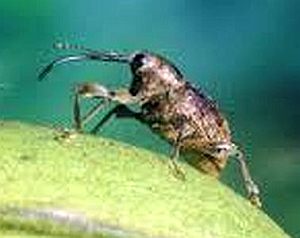
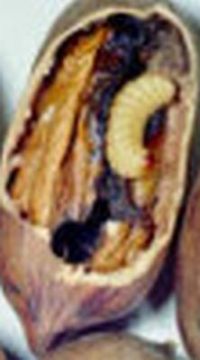
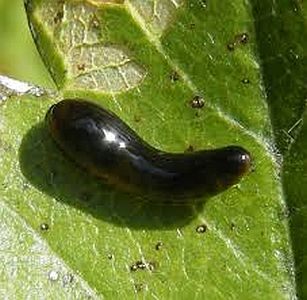
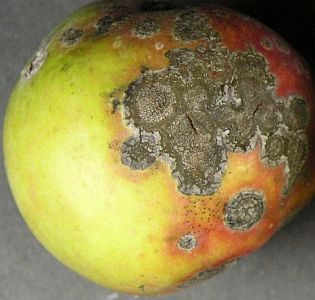
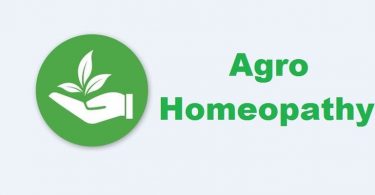
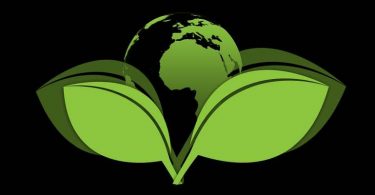
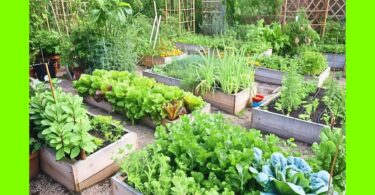

HI:
Would appreciate your guidance. I have some Indian Jasmine plants. They look quite healthy but not muchbloom. What can be done to bloom it vigorously with healthy flowers. The few blooms are very tiny aqnd turn color before fully blooming and fall off. Ingeneral what is suitable for flowering plants like hibiscus,rose dahlia marigold etc.
I am also trying to grow some curry leaf plant also known as sweet neem. What will help it to grow more vigoursly I am keeping it in the green house for now.
I live in Northern California so the summers are not very hot and not very long.
Thanks
Hi, Prabharaj,
for the jasmine I suggest: Argentum metallicum LM18, 3 globules in 10 l water, pour the plants once. And Magnesium metallicum Q12 in 10 l water, pour two weeks after the Arg. met.
I don’t have a suggestion for your second question, homeopathy doesn’t work “in general” it works only individually for each case.
For the curry leaf plant I would take Tuberculinum C200, 3 globules in 10 l water, pour the plants twice within of two weeks. Add Aurum LM12, 4 globules in 10 l water, three weeks after the beginning of the treatment with Tuberculinum your pour the plants with Aurum. That’s all.
Regards from Germany, Sabine
The pattern on the apple from Bill and Charlotte…. looks very interesting! It looks like Argentum metallicum (colour!) …no! It looks like the moon! You have round patterns on the apple! That’s it! You have to think in pictures. So I suggest Luna M, 3 globules in 10 l of water. Pour the trees three times: first date, then 10 days later and then the third time also 10 days later after the second date. That’s all!
@Mark Moody: Compare Aurum met. and Sol Argentum metallicum and Luna, you have nearly the same symptoms for Aurum and Sol, but for Sol the pattern is round… (It is the same for Arg. met. and Luna) Therefor I found the Luna in this case only with the symptoms and checked it with radionics.
Respected Sir
We are cultivating cotton in india the main problem is Aphids,jasids and mites .Kindly requesting you the remedies in homeo medicine
thanks and regards
P.Appa Rao
Hallo, Mr. Appa Rao,
try for your cotton plants, please: Luesinum LM15, once 4 globules in 10 l of water. With this water you pour the plants. Then two weeks later: Gymnadenia conopsea (orchid) LM15, once 4 globules in 10 l of water. If it is difficult for you to buy the remedies in your country, try it here: http://www.remedia-homeopathy.com/en/homeopathy/orchid/g32.html
I send you the best wishes from Germany, Sabine